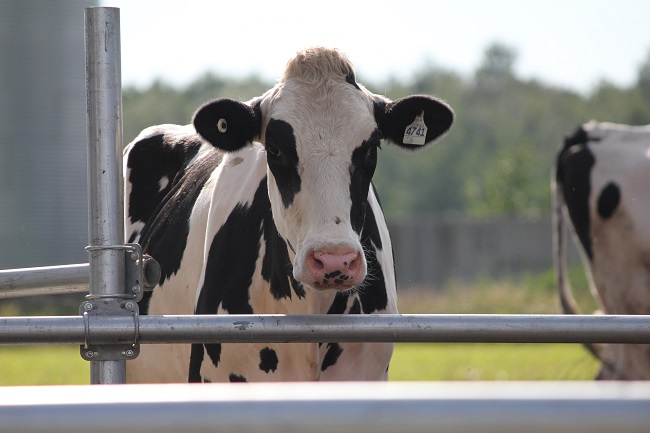
Agricultural Research Service scientists have discovered why Holsteins, bred to produce more milk, are less fertile than before breeding efforts were stepped up to increase dairy production: It’s in their DNA. Since the U.S. dairy industry intensified selective breeding efforts in the 1960s, average milk yield in Holsteins has doubled, but the cattle are less fertile. A comparison of DNA from cattle selectively bred for milk production versus cattle isolated from such practices shows a genetic link between increased yields and reduced fertility, according to researchers at the ARS Animal and Natural Resources Institute in Beltsville, Md. The researchers teamed up with colleagues at the University of Minnesota to compare the genomes of modern Holsteins with those of UM cattle never exposed to the modern selective breeding practices. The lack of exposure meant that DNA from the UM cattle were genetic “time capsules” of an era before the selection efforts intensified.
ANRI geneticist John Cole and colleagues drew DNA samples from the genetic material of about 2,000 cattle, stored at the ARS National Center for Genetic Resources Preservation, the Holstein Association USA, and five U.S. universities, including UM. The scientists extracted DNA and genotyped the samples using the Illumina Bovine SNP50 BeadChip, a glass slide capable of obtaining genotypes for thousands of markers simultaneously. The device was developed by ARS researchers in collaboration with industry, university, and other ARS partners. By analyzing 50,000 genetic markers, the researchers found that many of the chromosomal regions associated with increased milk yield were also associated with reduced fertility rates. The results also showed that up to 30 percent of the Holstein genome may be influenced by standard breeding practices. The researchers say the results will help Holstein breeders and milk producers better understand tradeoffs between high yield and low fertility when selecting for more profitable dairy cattle.
Submitted by Dennis O’Brien. ARS is the principal intramural scientific research agency of the U.S. Department of Agriculture
Did You Know
A cow eats about 100 quarts of grass and can chew 41,600 times a day. One cow can produce 25 quarts of milk, but it takes 400 quarts of blood to pass through the udder for that much milk.
Related Articles & Free Email Newsletter Sign Up
Cattle Show to Align North-South When Grazing
How to Preserve Winter Teat Condition in Dairy Cattle
Procedures for Handling Dairy Cows Before They Enter the Food Chain


Comment here